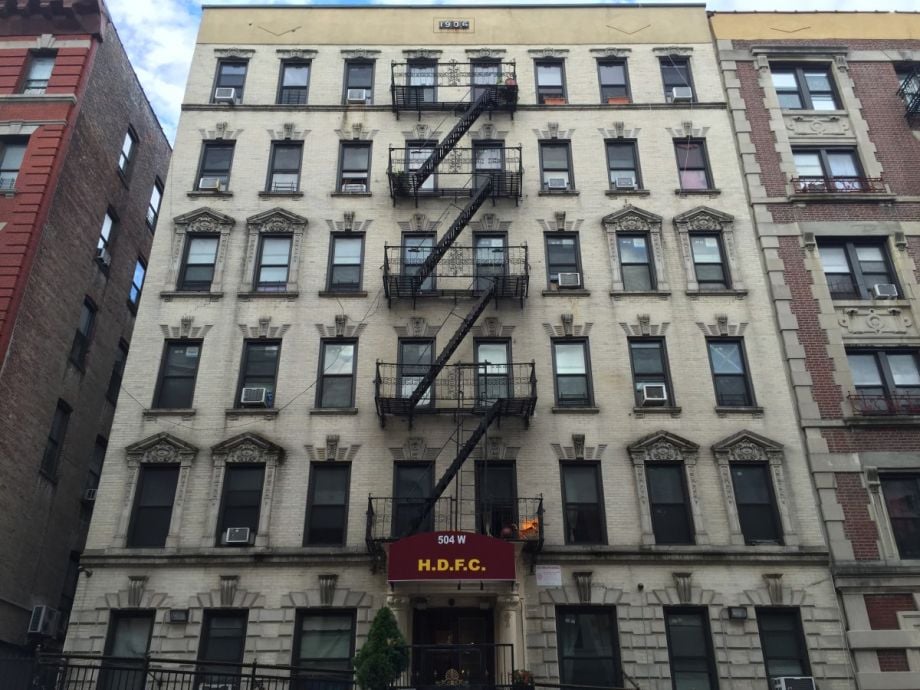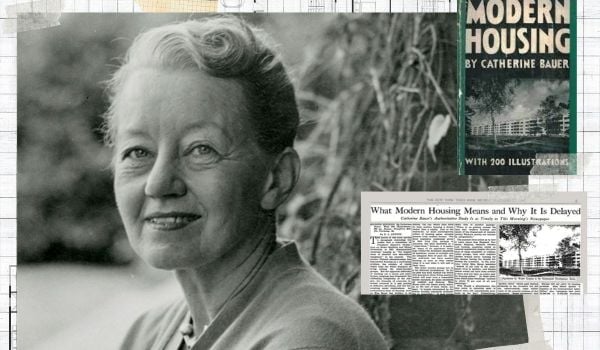The New York Council for Housing Development Fund Companies (NYCHDFC), which keeps a database of cooperatively owned buildings, estimates there are about 300 distressed low-income cooperatives in the city with municipal debt problems. Along with other long-standing building maintenance needs, the financial trouble is a threat to an important legacy of the city, as well as a potential setback for Mayor Bill de Blasio’s goals of building or preserving 200,000 units of affordable housing over the next decade. But more help is on the way.
New York City’s famous limited equity cooperatives, cooperatively owned and governed by residents, offer permanently affordable homeownership to many middle-class and poor households. The model emerged in the 1970s when, as in most cities, landlords were abandoning buildings left and right. Years of white flight coupled with discrimination in lending in black and brown neighborhoods meant dead-end real estate markets and crumbling buildings. Some landlords paid desperate hired hands to burn down many buildings so they could collect insurance and move on. The Bronx saw 97 percent of its buildings affected by fire or abandonment between 1970 and 1980, with arsons peaking in 1976.
Amid that turmoil, community activists offered a proposal to the city for its estimated 11,000 foreclosed or seized buildings: Turn over ownership to residents of the buildings. The Urban Homesteading Assistance Board (UHAB) formed in 1973, and since then, has directly helped tenants of around 1,600 buildings convert to co-op. Many were already occupied by poor and very poor families, including formerly homeless families placed by the city while under its ownership. The co-ops were meant to be a way for these families to gain some stability and lift themselves up.
Along with ownership, residents would in theory maintain buildings by raising monthly co-op fees over time as necessary to cover expenses — but never more than everyone could comfortably pay. Section 8 vouchers often chipped in to help cover gaps in affordability as they emerged. With low-income tenants, however, that margin is tight and covering all the expenses is tough.
Decades later, many are struggling to keep up with bills and maintenance. “Buildings [became] co-ops with very low-income families,” says Andy Reicher, executive director of UHAB. “So the buildings are very tight on the income side, and try to manage themselves right at the margin … the place where they usually fall behind is either on the real estate taxes or water and sewer bills, because the consequences aren’t so immediate.”
Over time, those debts build up. Annual interest charged on municipal debt is generally around 18 percent. Buildings can end up owing more in interest than they do on original tax bills. In these situations, the city has a few actions it can take.
As Reicher explains, it can take ownership away from residents, putting the buildings through its Third-Party Transfer Program into the hands of a new owner who promises to keep it affordable for some set amount of time. UHAB has taken on many third-party transfer program buildings, eventually cycling them back into resident ownership after doing repairs to both the buildings and their governance. Or the city can put the building’s debt into its annual tax lien sales, allowing investors to buy the debt at a discount, which can often result in a building being sold to the investor as a condition of settling the debt. Who knows what the investor might do at that point.
But it can take years before the city takes either of those more drastic options. “The real risk is that the buildings languish in the meantime,” Reicher says, with residents living in substandard conditions. The city has low-cost loan programs meant to provide capital for repairs to co-ops and other multifamily buildings, but buildings need to have a plan to resolve municipal debt as a condition of obtaining those loans.
“We are at a loss as to where those other funds come from,” Reicher says. “There just are very few sources beyond some credit unions that may have some capacity. It’s a real issue.”
A means to resolve that municipal debt will soon be available, from a source that is somehow obvious and, at the same time, surprising. Habitat for Humanity’s New York City chapter recently incorporated a new loan fund whose product offerings will include a loan specifically designed to plug this gap in the market. The organization is working toward CDFI (community development financial institution) certification for the fund.
“We saw an opportunity to form a CDFI and focus on specific funding products in a very specific market that will help to influence and develop more housing than we could ever do on our own,” says Karen Haycox, CEO of Habitat for Humanity NYC.
The chapter of the well-known nonprofit is seeding the loan fund with its own money, and plans to leverage its location in the financial capital of the world to scale up as necessary.
“If we don’t plan ahead, if we don’t think about what’s going to happen to future generations of working-class people, they’re going to disappear and NYC will be the largest moated community in the world,” says Christopher Illum, who is spearheading the CDFI. “Banks are interested in financing this too. They know who we are.”
There’s the added benefit of Habitat for Humanity NYC being a licensed general contractor with years of experience that can go right into some of the work that these co-op buildings need to get done once they can resolve their municipal debt.
Along with NYCHDFC’s data, Reicher estimates that of the remaining 1,300 or so limited equity co-ops in UHAB’s network, representing about 30,000 housing units, about a quarter of them have some kind of municipal debt issue. Not all of those will need a loan from Habitat to clear municipal debt, and some will need more drastic measures like the third-party transfer program, but ultimately preserving them is a goal that few others are prioritizing. Loans to resolve debt typically are too small for a bank to care — under $1 million. Reicher says most bank loan officers just don’t have the time to deal with something that small when it takes the same effort or even more effort than larger loans. It’s a gap in the city’s affordable housing ecosystem.
“It’s very frustrating how little attention gets paid to preserving these 30,000 units,” he says.
Editor’s Note: This article has been corrected to reflect that Habitat for Humanity’s New York City chapter is still working toward CDFI certification for its new loan fund.

Oscar is Next City's senior economic justice correspondent. He previously served as Next City’s editor from 2018-2019, and was a Next City Equitable Cities Fellow from 2015-2016. Since 2011, Oscar has covered community development finance, community banking, impact investing, economic development, housing and more for media outlets such as Shelterforce, B Magazine, Impact Alpha and Fast Company.
Follow Oscar .(JavaScript must be enabled to view this email address)
















